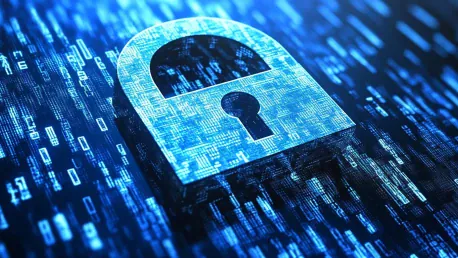In today’s rapidly evolving technological landscape, manufacturers face not only the challenge of maintaining high production standards but also the daunting task of safeguarding sensitive data and systems from sophisticated cyber threats. Compliance with cybersecurity standards, particularly those developed by the National Institute of Standards and Technology (NIST), is essential for manufacturers to protect their operations. Adhering to standards such as NIST 800-171 and the updated NIST Cybersecurity Framework (CSF) 2.0 can significantly bolster a manufacturer’s security posture while ensuring they remain competitive and capable of securing lucrative contracts.
Understanding the Importance of NIST Compliance
Protecting Sensitive Data and Securing Contracts
For manufacturers, especially those involved in defense or critical infrastructure, NIST compliance is not merely a matter of protecting sensitive data. It is a business imperative that holds significant consequences, including heavy fines, potential reputational damage, and loss of business opportunities. The essence of the NIST CSF 2.0 framework lies in its flexible and risk-based approach, which is structured around five core pillars: Identify, Protect, Detect, Respond, and Recover. These pillars guide organizations toward establishing a robust cybersecurity and risk management framework that can adapt to evolving threats.
Without comprehensive compliance measures in place, manufacturers may find themselves vulnerable to both internal and external cyber threats. Compromised operational technology (OT) systems, a prevalent concern in interconnected industrial environments, can have far-reaching repercussions. These repercussions can include production downtime, equipment damage, and even risks to physical safety. It becomes evident that achieving NIST compliance is a multifaceted endeavor that begins with a thorough risk assessment aimed at identifying critical assets, vulnerabilities, and potential threats in the manufacturing ecosystem.
Conducting Risk Assessments
A meticulous risk assessment serves as the foundation for NIST compliance, enabling manufacturers to identify and catalog critical assets, assess vulnerabilities, and anticipate potential threats. This comprehensive understanding of the cybersecurity landscape allows for the implementation of security controls that are specifically tailored to the unique needs of the operational environment. By thoughtfully designing these controls, manufacturers can ensure that they are neither overburdening their operations with unnecessary protocols nor leaving critical aspects of their infrastructure exposed to potential breaches.
The process of risk assessment is dynamic, requiring continuous evaluation and adjustment to address emerging threats. Regular audits and frequent vulnerability scans are essential components of this ongoing assessment, ensuring that manufacturers remain vigilant and proactive in their cybersecurity efforts. These proactive measures, combined with a strong understanding of the risk landscape, empower manufacturers to build and maintain a resilient cybersecurity infrastructure.
Key Steps to Achieving NIST Compliance
Developing and Enforcing Cybersecurity Policies
One of the most critical steps in achieving NIST compliance is the development and enforcement of comprehensive cybersecurity policies. These policies should address a wide array of crucial areas, including access management, data protection, incident response, and continuous system monitoring. By establishing clear and actionable policies, manufacturers can create a solid framework that ensures all aspects of their cybersecurity posture are covered. This, in turn, provides a strong foundation for defending against potential cyber threats.
A critical component of effective cybersecurity policies is access management, which involves enforcing stringent access controls to restrict unauthorized access to sensitive data and systems. Additionally, data protection measures such as encryption and secure data storage practices play a vital role in safeguarding proprietary information. Equally important is the incident response strategy, which outlines the necessary steps to be taken in the event of a security breach. The ability to promptly detect and respond to incidents can significantly mitigate the impact of any cybersecurity event.
Importance of Employee Training
Employee training is another pivotal aspect of achieving NIST compliance, as human error remains one of the most significant causes of security breaches. Regular, comprehensive training programs are vital for ensuring that employees at all levels are well-versed in cybersecurity best practices and equipped to recognize and respond to potential threats. These training programs should cover a wide range of topics, from basic cybersecurity hygiene to advanced threat detection techniques. Additionally, fostering a culture of vigilance and accountability within the organization can further enhance the effectiveness of these training efforts.
Manufacturers must also emphasize the importance of ongoing education and awareness, recognizing that cybersecurity is a constantly evolving field. By staying abreast of the latest developments and emerging threats, employees can remain a crucial line of defense against cyberattacks. Regular drills and simulated incidents can help reinforce training concepts and ensure that employees are prepared to act swiftly and effectively in the event of a real-world security threat.
Maintaining Compliance and Continuous Improvement
Continuous Monitoring and Updates
Maintaining NIST compliance is not a one-time effort but an ongoing commitment to continual improvement and vigilance. This demands continuous monitoring of systems, regular audits, and routine vulnerability scans to identify and address potential weaknesses before they can be exploited. By implementing advanced monitoring tools and technologies, manufacturers can gain real-time insights into the security posture of their systems, enabling proactive responses to emerging threats.
Equally important is staying updated with revisions to the NIST frameworks and other relevant regulatory requirements. As cybersecurity standards evolve, manufacturers must adapt their strategies and practices to remain compliant and secure. This might involve revisiting risk assessments, updating cybersecurity policies, and enhancing training programs to align with the latest industry standards. By fostering a culture of continuous improvement, manufacturers can build a robust and resilient cybersecurity program that supports long-term operational success.
Regular Audits and Incident Response Drills
In today’s fast-paced technological environment, manufacturers are not just tasked with maintaining high production quality but also with securing their sensitive data and systems against sophisticated cyber threats. To achieve this, compliance with cybersecurity standards, especially those developed by the National Institute of Standards and Technology (NIST), is crucial. Implementing standards like NIST 800-171 and the latest NIST Cybersecurity Framework (CSF) 2.0 can drastically improve a manufacturer’s security measures. These protocols help protect critical operations while keeping the company competitive and in a strong position to secure valuable contracts. By adhering to NIST guidelines, manufacturers can mitigate risks associated with cyber attacks and ensure their systems are resilient against potential breaches. This commitment to cybersecurity not only safeguards their intellectual property but also builds trust with clients and partners, ultimately contributing to long-term success in a highly competitive market.









